How to grow and use perennial alissum in the garden?
Gardeners are delighted with bright carpets all summer long alissumathat attract insects with their honey scent. The various forms of perennials will impress even the lazy flower lover. It is not difficult to grow it, for this you do not need to have a lot of knowledge, a little hard work and love for beauty will be enough.
Alyssum perennial, a representative of the Cruciferous family, has several names - beetroot, sea lobularia. More than a hundred species of plants have been bred; they decorate gardens in Europe, Asia, in the northern part of Africa. In addition to perennial varieties, there are also annual and shrub varieties.
Content:
- Description of perennial species of alyssum
- Reproduction and planting of a plant
- Flower Care Tips
- Pests and diseases of the flower, the fight against them
- Application in landscape design
Description of perennial species of alyssum
The bushes of the fragrant flower do not grow to a large size. They are characterized by a height of ten centimeters to one meter. The latter belong to low shrubs and are common in the southern territories. Alyssum decorativeness in its inflorescences with small petals of yellow, pink, lilac, rarely yellow tones. Flowers grow quickly and throughout the summer, before frost, they endow everyone around with waves of a pleasant aroma. Bunches of inflorescences are framed by oval bright green leaves on creeping stems.
For all varieties of the plant, the common is the shape of the flowering brushes, the creeping stem, and abundant flowering.
There are several types of ornamental plants:
- Have alissum rocky the bushes are similar in shape to a hemisphere with a diameter of forty centimeters at a height of thirty. The leaves are velvety ovoid, the flowers have all shades of yellow.
- For sea alyssum, or lobularia, are characterized by creeping shoots with small flowers forming brushes. The plant is distinguished by a variety of colors and a sugary sweet smell.
The perennial mountain type of flower with grayish shades of stems and leaves begins to bloom in April, covered with inflorescences of a bright yellow tone.
Reproduction and planting of a plant
The main method of reproduction of a flower is by seed. They begin the cultivation work by choosing a place that should be sunny, otherwise the beginning of the flowering of alyssum will be delayed. The seeds are planted to a depth of no more than one centimeter. With a high density of seedlings, it is necessary to thin them out, taking into account the peculiarities of the creeping stem. In order for the plant to bloom early, the seeds are planted in November. Thanks to winter sowing, the plant is tempered, and it will not be afraid of frosts.
Many people believe that it is safer to first grow flower seedlings, which should then be transferred to a permanent place. Having chosen this cultivation method, the perennial seeds are laid out on the soil surface. The soil in the container should be loose, moderately nutritious, with a small addition of slaked lime. The seed boxes are placed in a warm place with good lighting. You can cover them with foil or glass. For the rapid emergence of sprouts, future seedlings need watering and daily airing.
Planting a bright perennial is a simple matter, accessible even to a novice florist.
As soon as the first leaves are visible on the sprouts, they take up the introduction complex fertilizers. Picking carried out after the appearance of the third leaf. You can immediately plant the seedlings in a permanent place, and during a prolonged spring - in individual pots. After the threat of frost, well-lit places are prepared for perennial alissum with well-drained soil, neutral in composition. Seedlings are planted so as not to deepen it too much. The distance from bush to bush should be at least fifteen centimeters.
Blossom alissum begins in a month and a half after the emergence of shoots. After a long annual flowering, decorative bushes begin to lose their attractiveness, stretch out, bloom poorly. Then, at the beginning of summer, cuttings ten centimeters long are separated from the old plant and rooted in a mixture of peat or sand.
Flower Care Tips
The unpretentiousness of alyssum is known, and to care for the plant, you only need to comply with a number of requirements:
- Moderation in watering is the main condition for the lush flowering of the beetroot. Too moist or too dry soil is equally harmful to the growth of flowering bushes. You can find out about the watering time by the condition of the soil at a depth of four centimeters. If it is dry, then water the plant abundantly.
- Perennials are fed in the spring with fertilizer containing nitrogen, before flowering - with a complex mineral mixture. Fertilizers in liquid form are applied at the root, being careful not to get on the leaves and flowers.
- Loosening the land under flowering bushes will free it from weeds, make the soil more permeable, especially during the rainy summer.
- The seeds of the plant are harvested by cutting the inflorescences in dry, calm weather. Rubbing the branches between the palms, separate the seeds, which are dried in a cool, dark place. Store them in canvas bags.
- Another procedure is important for a perennial - pruning... As soon as in spring dried leaves appear from under the snow, weak shoots of beetroot begin to remove last year's parts of the plant. After that, the bushes take on a well-groomed look and are ready for further growth. Fading plants also need to be trimmed one third to increase flowering time. Even after removing all the wilted alissum inflorescences, you can see how decorative flowers are reborn. The renewal of the bushes of the garden culture will make it possible to bloom for a long time.
The pickiness of alyssum to growing conditions means only that the plant is a favorite inhabitant of garden plots, decorating them with its presence.
Pests and diseases of the flower, the fight against them
Fungal diseases of the plant are especially common. They appear during a humid and hot summer. Among them, powdery mildew, when whitish spots appear on the leaves and stems, increasing even after their removal. The affected parts of the plant dry up, fall off, and the flowers stop growing.
You can get rid of the fungus by spraying with special preparations, while treating the bushes with sulfur three times over the summer will help to avoid infection.
Powdery mildew characterize spots of a grayish, yellowish tone with an indistinct outline. Below, on the leaves, you can find the mycelium of the parasite in the form of a gray bloom. After removing the affected leaves, the alissum is treated with a 1% solution of Bordeaux liquid. It is more difficult to fight viral diseases of the flower. The result of a virus infection is the drying of the leaves, the formation of stripes on them, and the deformation of the green plate. It is better to completely destroy infected flowers, and to process the soil fungicides.
Taking too much care of the plant contributes to the development of infection Excessive moisture, overfeeding with nitrogenous fertilizers only helps bacteria and fungi grow on the tissues of the herbaceous plant.
Perennial pests:
- Of the insect enemies, alyssum is a cruciferous flea, which also adores cabbage, radish, turnips... A flying bug with an elongated body has a length of no more than three millimeters, and antennae are in a third of the body. The larvae of the parasite feed on plant juices, destroying them. Among the insecticides effective against the pest are Actellik, Aktara, Inta-Vir. From folk remedies, a decoction of tomato tops will help to destroy a flea. It is prepared from four kilograms of fresh herbs in ten liters of water. After insisting for four hours, the solution is boiled for half an hour, filtered. Diluted in half with water, add forty grams of grated laundry soap. Flowers are processed three times with a break of four days. A vinegar solution also helps - one tablespoon per bucket of water. You can scare off the pest from alissum with bundles of dry wormwood laid out under it, planted next to the marigolds, marigolds, nasturtium.
- Green caterpillars of the cabbage moth are able to fill the entire plantation of alyssum and destroy it, nibbling flowers and leaves. Indeed, over the summer they give from two to four generations. To prevent the reproduction of moths, it is necessary to weed the flower beds well, and if caterpillars are found, treat them with insecticides - Enterobacterin, Lepidocide.
- The whitewash butterfly is easy to spot on Cruciferous plants, and its caterpillars gnaw at the edges of the alyssum leaves. It is necessary to fight the pest by spraying with Gomelin, Enterobacterin.
The similarity of a flower with vegetable crops is manifested in plant diseases, pests that gnaw a flower.
The use of alissum in landscape design
The flower is a great tool in garden design:
- Dense plantings of both white and pink lobularia beautifully frame islands of tall lilies, Turkish carnations, and rose bushes.
- White airy bushes are combined with two-level plantings tulips, irises.
- Low-growing crops - petunia, begonia - look original in the vicinity of a color-matched alissum.
- The carpet of an ornamental plant is harmonious against the background of conifers: yew, juniper.
- In rocky gardens, flower bushes are planted around boulders. To avoid luridness, it is necessary to use no more than three tones of inflorescences in such an area. The flower is suitable for growing in a bed, on alpine slides. Alyssum planting is ideal for decorating the edges of the tracks
The possibility of using beetroot on various types of flower beds allows you to introduce the most original fantasies of decor on the site.
More information can be found in the video:



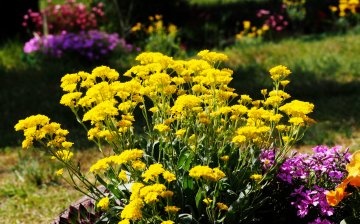
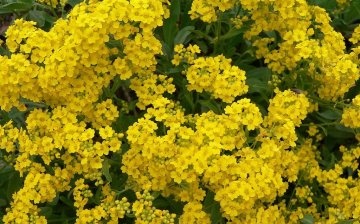
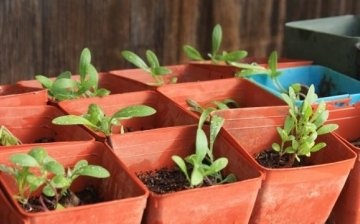

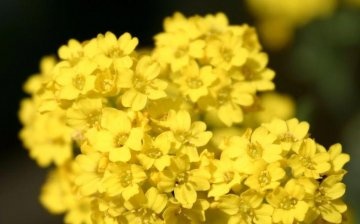







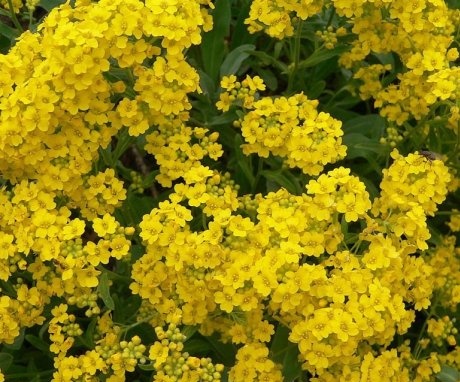


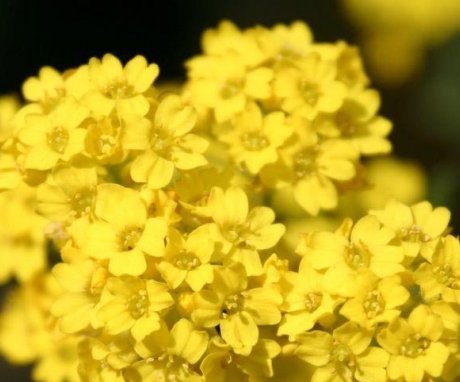
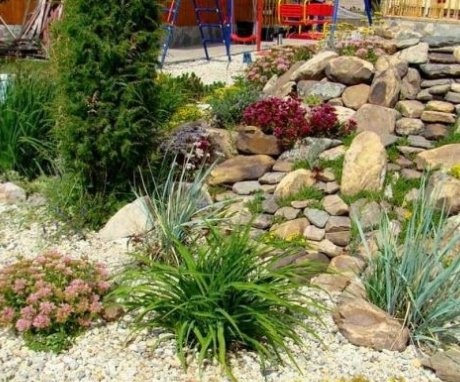
And in cold regions it is probably not entirely realistic to grow it, for some reason I do not believe that it will work out, and so the plant is undoubtedly beautiful and would take a crown place in design.